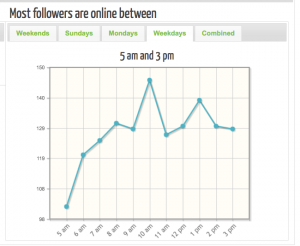When shoppers arrive at checkout, an overwhelming majority get cold feet. The data suggests that, on average, 68.53% of shopping carts are left abandoned. Additionally, for eCommerce stores, a whopping $ 4 trillion worth of goods are left idle in shopping carts floating around cyberspace. On the bright side, there is a 63% chance of recovering lost sales with targeted email campaigns.
But what if you could nip the problem in the bud?
At checkout, there a few tactics brands may employ to reinforce positive purchasing decisions. To curb shopping cart abandonment, improve average order values and increase customer loyalty, we have developed an unusual checklist to help you upgrade your checkout pages. Below are seven things you will want to include to create a more engaging checkout process that converts window shoppers into happy, paying customers.
1. Add the option to donate
Consumers love aligning themselves with brands that share the same social values. Take, for instance, Bombas, TOMS and Warby Parker. Each champions the buy-one, give-one model and has millions of fans around the world. Unfortunately, few businesses can afford to donate a product every time a customer completes a purchase. Instead, eCommerce brands can show their support for certain causes in other ways such as matching shoppers’ donations.
In 2010, the Cone Cause Evolution Study found, “85% of consumers have a more positive image of a product or company when it supports a cause they care about.” Furthermore, “90% of consumers want companies to tell them the ways they are supporting causes.” Indeed, giving back creates more favorable perceptions of your brand. But is charitable giving good for business?
Research by eBay in 2013 revealed that when stores provided customers the option to donate, shoppers spent 26% more per order and were 50% less likely to churn. Companies also noticed that their sales rose 29% and they experienced a 67% lower turnover rate. To demonstrate your support for specific social causes, add an option to donate during checkout and prove your commitment to social good by volunteering to match every dollar donated so the charities you support receive double the contributions.
2. Build urgency into the purchase

Flash sale sites such as Gilt, Rue La La and Hautelook were among the first major eCommerce businesses to popularize the use of time-limited shopping carts. Because they sold limited-quantity products on a first-come, first-serve basis, they worried some shoppers would abuse the system and hoard all the high-demand inventory in their shopping carts. So, stores built timers into their shopping bags and checkout pages. Customers had anywhere from five minutes to an hour to continue shopping and checkout before the store forcibly emptied their shopping cart so other customers could have a fair chance to purchase the items they wanted.
For regular eCommerce businesses, time limits on shopping carts prompt customers to make faster and more certain purchasing decisions. Shoppers will debate less about whether or not their purchase is justified and will likely make an impulse buy. Generally, they decide to follow-through with their order since they have already invested so much time and energy into finding the right products to add to their cart.
3. Offer feedback channels
Business owners are blind to their own flaws. Thus, your customers will always see something you don’t. Although adding a prompt for feedback may seem like a distraction that all conversion rate optimization experts strictly advise against, the benefit of including a feedback form is you get to crowdsource ideas that will drastically improve your checkout pages and process. And hopefully, the feedback you receive is well worth the tiny — if any — dip in conversion rate.
Also, stores source the best customer feedback when it comes in real-time versus after-the-fact. For Harvard Business Review, business professors Emma K. Macdonald, Hugh N. Wilson and Umut Konuş explain, “[Traditional surveys and focus groups] rely on customers’ memories, which decay rapidly.” They add, “Consumers frequently recall a company’s communications [and their experience with a brand] inaccurately.” Therefore, it is better to provide shoppers the option to share feedback wherever they are in the shopping process.
Another way to gather real-time customer feedback is through live chat. By implementing a live chat solution into your eCommerce site — and especially on your checkout pages — you can further guide shoppers towards completing their purchase.
4. Promote your gift cards

If customers like your product, there is a high chance that they will want their friends to enjoy your product too. So, at checkout, promote your gift card offerings and make it easy for shoppers to walk away with a treat for themselves and a gift card for a loved one.
A 2014 study by the National Retail Federation stated that holiday shoppers spent more than $ 31 billion on gift cards alone. Outside of the holidays consumers still love gift cards, which they share on other occasions such as birthdays, anniversaries and personal celebrations.
Naturally, it is not always enough to just offer gift cards. One way to motivate shoppers to add a gift card to their purchase is by incentivizing them with special deals. Share exclusive discounts on gift cards with a qualifying purchase. For example, you can sell gift cards at 10% off when shoppers order more than $ 100 worth of product excluding the gift card.
5. Postpone account creations
One of the most impactful ways to reduce shopping cart abandonment is by removing barriers to purchase. During checkout, a common reason why customers never complete their purchase is because there are too many forms to fill out and steps to go through. In our on-demand society, shoppers do not have the patience to enter personal, and sometimes unnecessary, information into dozens of different fields on a web form.
Knowing that, user experience expert Jared M. Spool decided he would redesign the checkout pages for a major eCommerce retailer who already generated $ 25 billion in annual sales. Instead of forcing shoppers to create an account to complete their purchase, Spool and his team made it optional. Furthermore, this was a step that customers could take after they placed their order. And the results were astounding. Spool says, “The number of customers purchasing went up by 45%. The extra purchases resulted in an extra $ 15 million the first month. For the first year, the site saw an additional $ 300,000,000.”
6. Recommend complementary or related products

Before your customers abandon their carts, recommend products that complement the other items in their shopping bags and help them squash excuses for not following-through with their purchase. For example, buying a bike light may feel incomplete without an order of batteries. So, you will want to recommend an 8-pack of AA-batteries.
Unfortunately, this strategy does not work well with price-conscious consumers. To give them a product they want that is also within their budget, recommend similar, cheaper products during checkout.
Either way, make sure your product recommendations are integrated with your shopping bag so customers can seamlessly add items to their order without having to load and scroll through other pages. Think of this as the digital equivalent of cash register impulse buys at your local grocery store.
7. Share a coupon
Data from VoucherCloud reveals three interesting statistics:
- 91% of coupon redeemers are more likely revisit retailers that offer coupons
- Coupons reduce cart abandonment rates by up to 57%
- 62% of shoppers spend two hours every week searching for coupons
Simply put: Many customers won’t purchase without a coupon. This is especially true of first-time shoppers who desire coupons to minimize their financial risk in case their purchase goes horribly wrong.
ECommerce stores that want to convert more casual visitors into customers should automatically provide customers with coupons they would otherwise find around the web. ECommerce marketing strategist Alicia Doiron points out, “ComScore found that in 2009, 27% of people who searched for a coupon code never returned.” The saddest part about that statistic is there are a good number of shoppers who fully intended on completing their purchase before they wandered back into the distraction-filled web.
To address this issue, Macy’s took an innovative approach. Doiron shares, “Macy’s, a large department store, found that many of their customers would leave their cart in order to find a promo code and return to complete their purchase only after they found one. They wanted customers to stay on their site, so they came up with a brilliant idea. On the shopping cart page there is a box with a header that reads, ‘Have a promo code?’ and a link to ‘Find one now’. The link takes the customer to a Macys.com page listing with current discount codes, keeping customers on their site.” Best of all, this strategy helps Macy’s avoid paying commissions to other sites that highlight active eCommerce coupons for consumers for free but charge brands an affiliate fee.
Though some may argue this sort of strategy attracts bargain hunters and encourages shoppers to demand discounts on future purchases, you have to consider how shoppers may feel if they find working coupons after they complete their purchase. Most will feel burned. Some may feel cheated. By proactively issuing customers coupons that apply to their order, you add an element of surprise to the checkout process which delivers happiness and strengthens customers’ resolve to complete their purchase.
Digital & Social Articles on Business 2 Community(144)
Report Post





